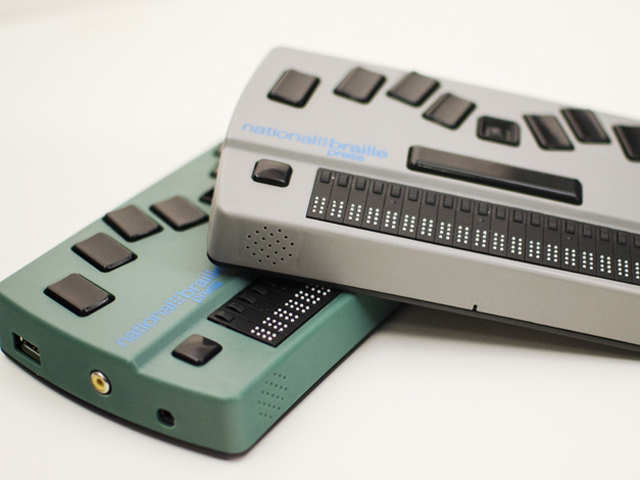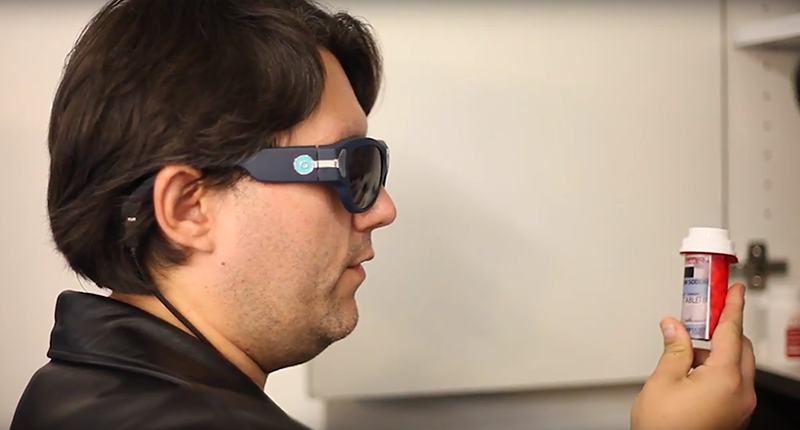Enhance Accessibility with Braille Tools and Notetakers
Enhance Accessibility with Braille Tools and Notetakers
Blog Article
Empowering Self-reliance With Assistive Innovation for the Blind
The combination of assistive technology right into the lives of individuals with visual impairments stands for a substantial improvement in promoting self-reliance and self-sufficiency. From ingenious display visitors to innovative wise walking sticks, these devices not just boost everyday navigating and communication however likewise empower individuals to engage meaningfully in numerous aspects of life. As we check out the myriad advantages and real-world applications of these modern technologies, it ends up being essential to check out the hidden elements that add to their effectiveness and the potential for future advancements in this crucial area.
Review of Assistive Innovation

The advancement of assistive technology is based in concepts of inclusivity and empowerment. Developments in software program, hardware, and sensory enhancements supply customers with options tailored to their certain requirements. From display viewers that transform message to speech, to responsive devices that share info with touch, these devices transform the means individuals involve with their environments.
Along with sensible applications, assistive modern technology promotes greater social addition and participation in different markets, including education and work (AI-powered visual aids). As r & d remain to evolve, the possibility for assistive innovation to better improve the lives of aesthetically damaged people stays encouraging, leading the way for a more equitable culture where everybody can prosper
Types of Assistive Tools
A variety of assistive tools have arised to sustain individuals with aesthetic disabilities, each created to meet specific requirements and boost daily functioning. These gadgets range from low-tech solutions to sophisticated technologies, offering varied options for individuals.
Low-tech devices consist of magnifiers and large-print products that aid in analysis and writing. Braille devices, such as Braille slates and styluses, allow tactile reading and interaction. Positioning and mobility aids, like white canes, assist individuals navigate their atmosphere securely.
On the greater end of the range, digital magnification systems and display readers provide significant support. Digital magnifiers allow customers to expand message and photos on screens, while display readers transform electronic content right into synthesized speech, helping with accessibility to information on computer systems and mobile phones.
Smart device applications likewise play a crucial role, providing features like message acknowledgment and navigating support. Wearable innovation, such as clever glasses outfitted with augmented fact, is arising as an encouraging tool to improve situational recognition.
Advantages of Assistive Innovation
The combination of assistive technology substantially enhances the quality of life for individuals with aesthetic disabilities. These innovations empower individuals by promoting independence, allowing them to navigate their settings more successfully and execute daily jobs with greater ease. Screen visitors and magnifying software program allow individuals to access digital information, fostering expert and educational opportunities that might have previously been out of reach.
Additionally, assistive gadgets such as wise walking canes and GPS applications supply real-time navigation support, improving movement and safety and security. This boosted freedom not just boosts self-worth however additionally urges social engagement, allowing users to participate more totally in their neighborhoods.
Assistive modern technology additionally assists in communication, helping customers get in touch click resources with others via voice acknowledgment and text-to-speech applications. This capability is essential for keeping connections and accessing important information.
Additionally, the modification alternatives offered with several assistive modern technologies guarantee that individuals can customize tools to their particular needs, better improving use and effectiveness. In general, the benefits of assistive technology for individuals with visual problems are extensive, promoting an extra comprehensive culture where everybody can pursue their goals and goals.
Study and Success Stories
Highlighting the transformative influence of assistive innovation, countless study illustrate how people with aesthetic disabilities have actually effectively incorporated these devices into their every day lives. One compelling example involves an university student that used display analysis software to navigate scholastic products and on the internet sources properly. This technology not just facilitated her education and learning but also enhanced her self-confidence in taking part in conversations and team tasks.
Another instance research features a specialist her latest blog that uses a smartphone application created for navigation and item acknowledgment. By utilizing this app, he has actually reclaimed freedom in both his personal and workplace, enabling him to commute separately and engage with colleagues better.
In addition, a retired person shared her experience with braille e-readers, which enabled her to access a huge range of literature and stay attached with her community with publication clubs.
These success stories underscore the crucial role of assistive technology in fostering independence, enhancing quality of life, and advertising social combination for people with visual disabilities (Speech-to-text devices for low vision). By accepting these ingenious devices, individuals can get rid of challenges and seize chances that add to their specialist and personal gratification

Future Patterns in Assistive Innovation
Development in assistive innovation is poised to redefine the landscape of support for people with visual problems. Arising trends stress the combination of expert system (AI) and artificial intelligence, which enhance the functionality of gadgets that aid with navigation and information availability. For example, AI-driven applications are now capable of interpreting visual data in real-time, making it possible for check my blog individuals to engage with their environment much more independently.
Additionally, the development of wearable innovation is progressing swiftly. Smart glasses equipped with increased reality (AR) can offer audio descriptions of environments, changing how users connect with public rooms. These gadgets not just advertise autonomy yet additionally foster social inclusion.
Furthermore, the Internet of Things (IoT) is making homes smarter, allowing for seamless connection in between day-to-day devices and assistive tools. This connection empowers individuals by enabling computerized feedbacks and voice-activated controls tailored to specific needs.
Conclusion
In final thought, assistive innovation plays a pivotal duty in encouraging individuals with aesthetic problems by boosting their freedom and interaction with their environments. The varied series of devices and applications available not only assists in navigation and communication yet also advertises social combination and opportunities for individual and expert growth. As innovations proceed in this area, the capacity for boosting the lifestyle for those with aesthetic disabilities will increase, cultivating higher freedom and empowerment.

Report this page